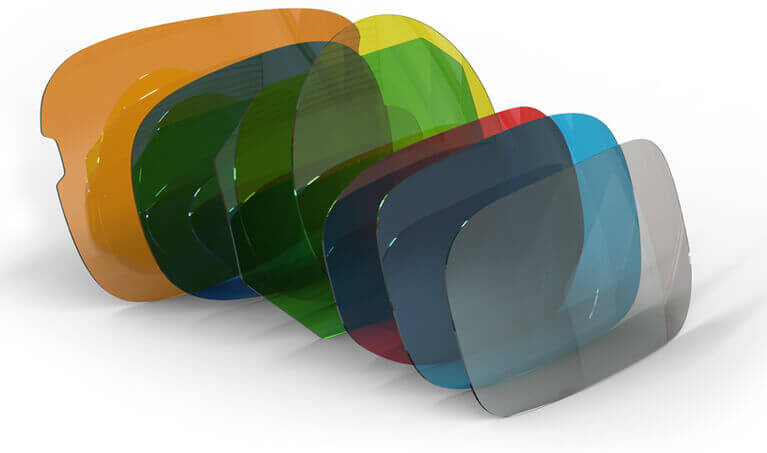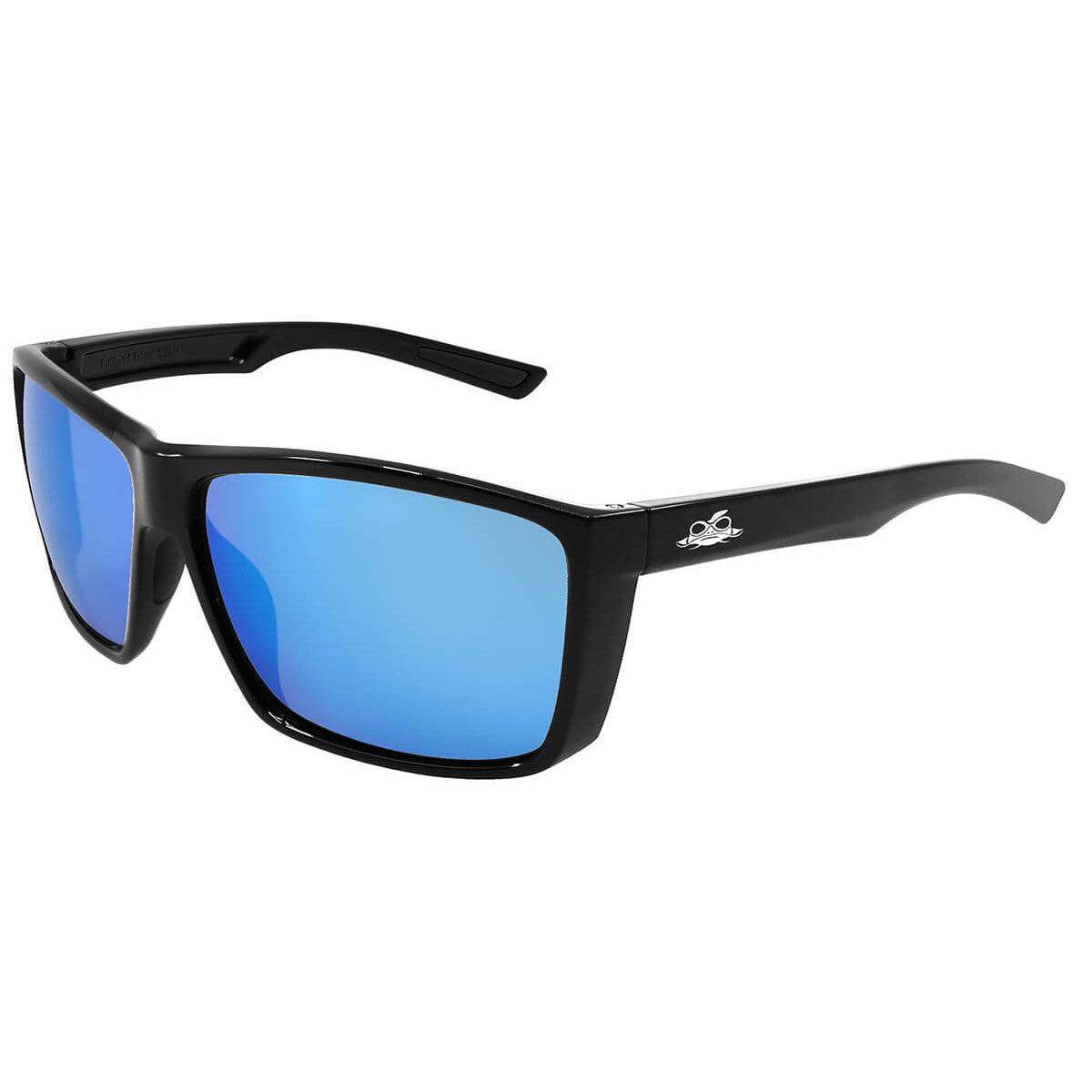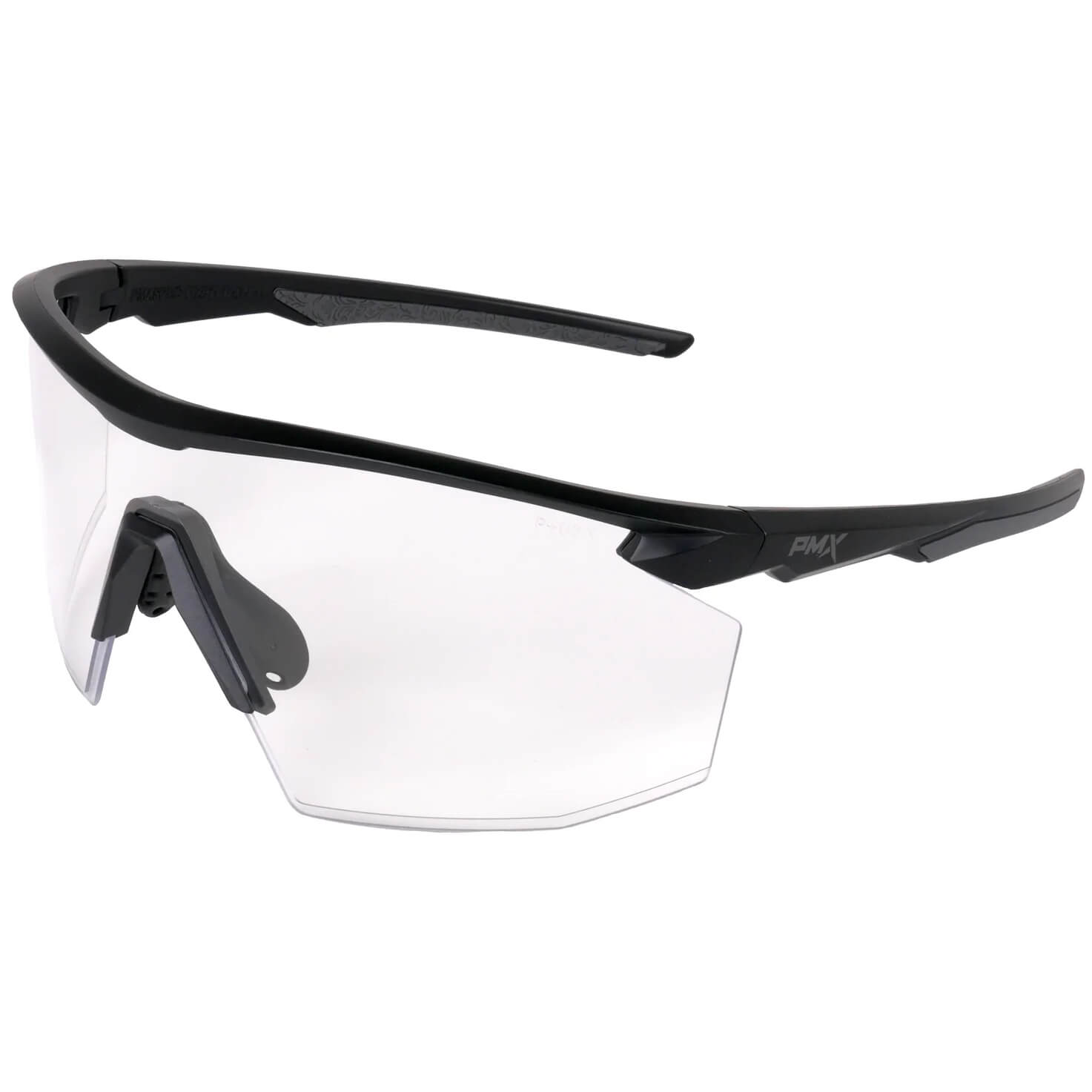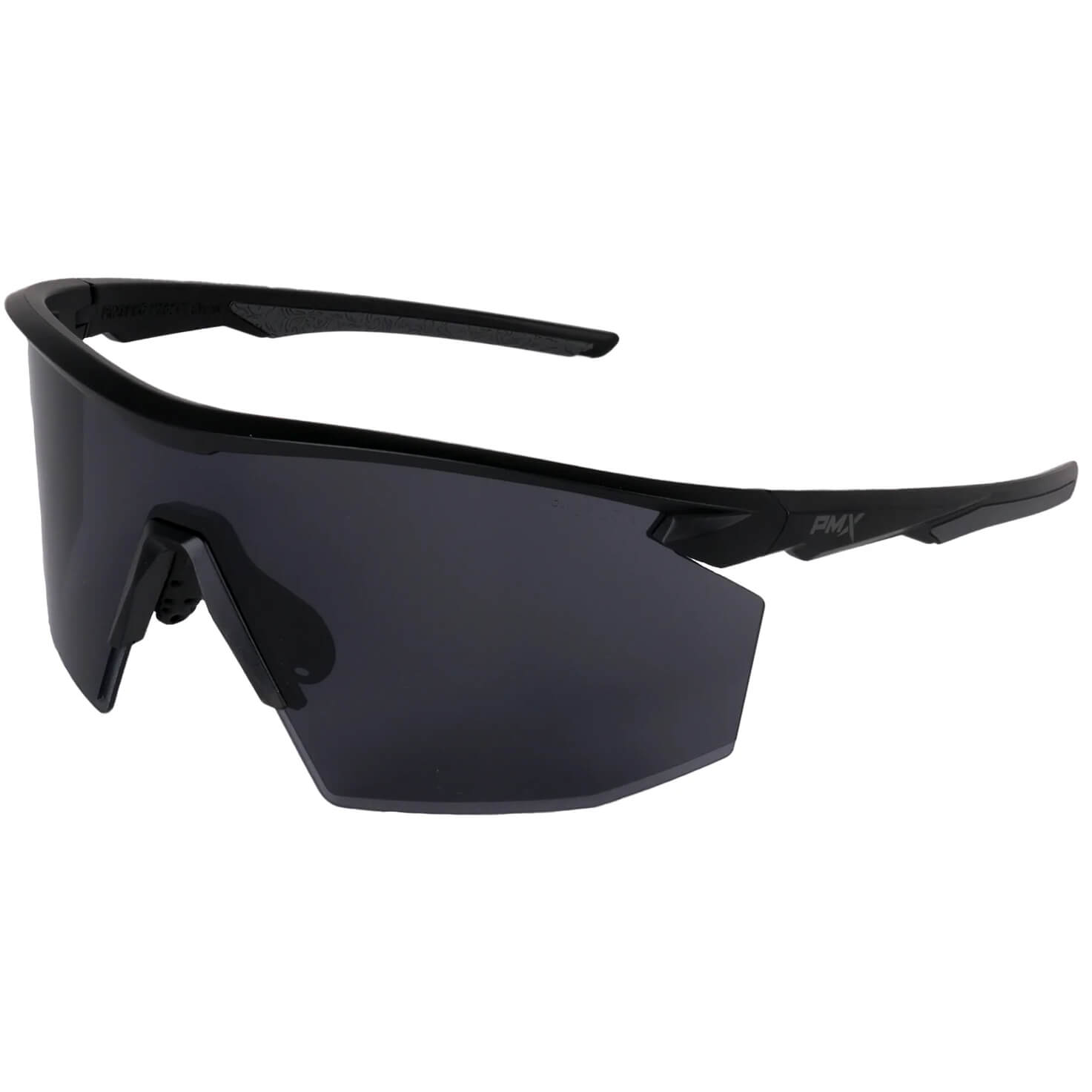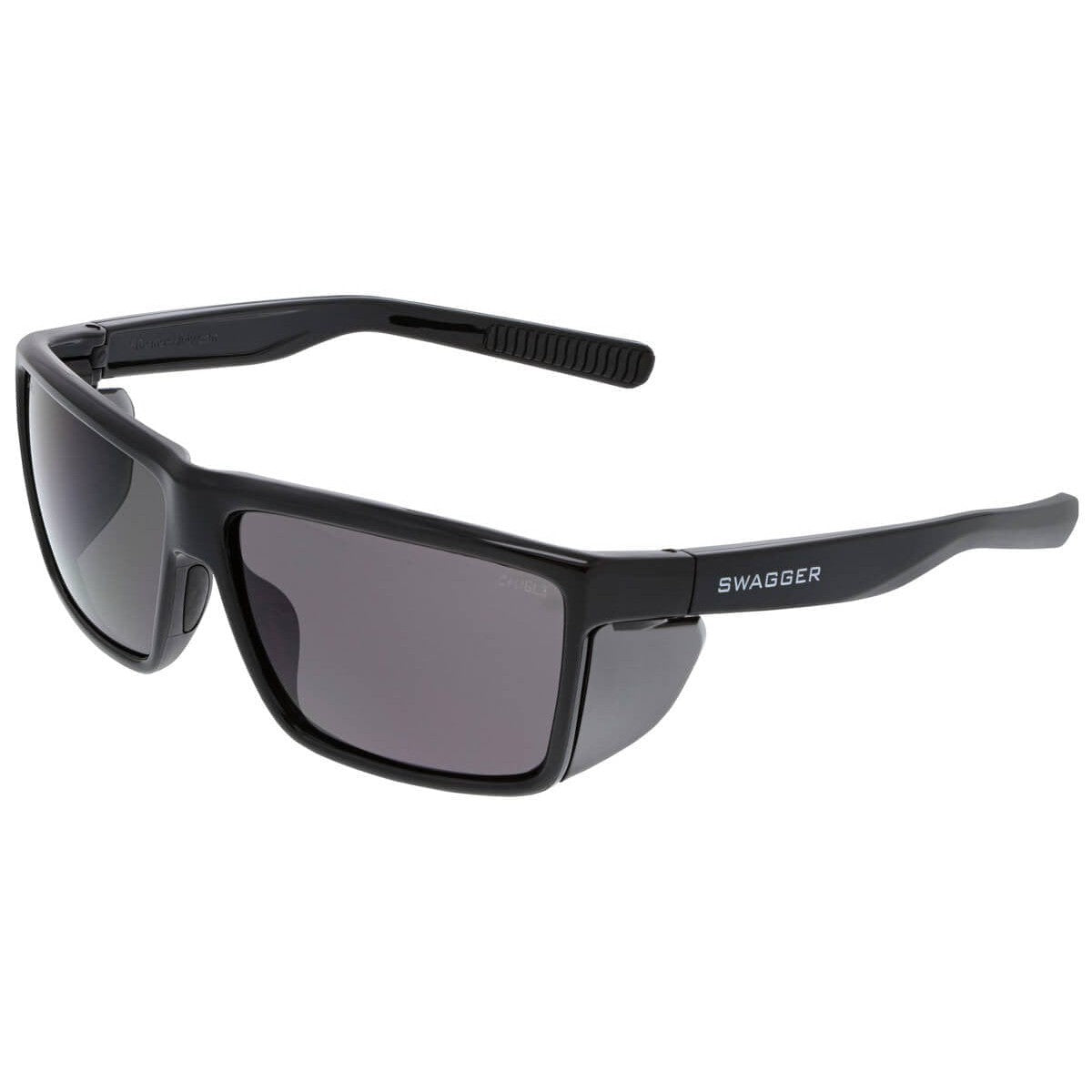Today’s safety eyewear comes with seemingly endless combinations of features. From frame style and color to lens coating and safety standards, there’s exactly what’s needed for any situation.
Lens tints create even more options. With a range of colors and gradients, every option holds specific purposes and benefits. Choosing the best lens tint depends on the environment and lighting conditions combined with the unique needs and preferences of the wearer.
Understand Light Exposure
Understanding light exposure can help you understand the value of lens tints and how to choose the best color. Specifically, having a basic knowledge of visible light (white light) and the two light ranges on either side of it on the electromagnetic spectrum, infrared (IR) and ultraviolet (UV). General knowledge of visible light transmission (VLT) is also helpful.
Visible Light
Visible light, also called white light, makes up a relatively small range of light waves humans can see. If visible light is broken out through a prism, we can see a rainbow pattern showing the spectrum of light colors visible to us. That range starts with blue on one end and ends with red on the other, with yellow and green combining in the middle to make up the range most natural for us to see and process.
Blue Light
While we won’t go into detail on each type of visible light, blue light does deserve some attention because of its potential negative impact. Because blue light scatters easily compared to other visible light, we have more trouble focusing on it. Prolonged exposure results in quicker eye fatigue than different types of visible light.

Blue light also suppresses Melatonin, a hormone our brain releases to help us sleep. In addition, electronics like cell phones, TVs, and computer monitors emit blue light and can contribute to sleep deprivation.
“More research is needed, but exposure to blue light clearly has a significant impact on general health. In addition to causing color distortion and potential eye strain and damage, blue light may also increase cancer risk and have connections to diabetes and obesity.” (Benefits of Copper, Orange, Yellow and Brown Lens Tints)
Ultraviolet (UV)
Beyond blue light in the visible light spectrum is UV light. UV is invisible to us. Overexposure to UV light damages skin and eyes, which is why we wear sunscreen and sunglasses that block UV light.
All quality safety eyewear and sunglasses block 99.9% of UV light regardless of lens tint.
"Lens tint is sometimes confused with how dark the lenses are, and some people feel that the darker the lenses the more effective they are. Unfortunately this is a false assumption… it is not how dark or light the lenses are that determines their effectiveness in blocking these harmful uv rays, but rather the coatings applied to the lenses!"
Infrared (IR)
IR, just beyond the red end of the spectrum, is also invisible and harmful to us. Tools used in welding and lampwork applications emit IR, and working with or near these requires precise lens shading.
Visible Light Transmission
When sunlight passes through any barrier, like a window or lens, some is absorbed, and some is reflected. The light that successfully passes through the barrier is measured and represented as a percentage of total sunlight. This number, known as VLT, is affected by any tinting, lens thickness, lens material, and any coatings applied.
“The reason visible light transmission is important is that the amount of light determines how comfortable your eyes are when looking through sunglass lenses…” (The Importance of Visible Light Transmission)
A coating must be applied to eyewear lenses to control the amount of light passing through. Visible light may not harm the eyes but can still impact vision. Each lens tint allows a different percentage of VLT through to the eyes.
Know Why Lens Tint Is Important
Lens tint is essential because it helps optimize performance, provides better visibility, and increases eye comfort. In addition, it controls VLT, which can cause discomfort and pain with overexposure.
“The importance of lens tint has to do with visual acuity – your ability to see objects through the lens clearly and with precision. Each lens tint relates to a specific issue the wearer may encounter.” (How Important Is Lens Tint?)
Lens tint affects glare and the ability to see colors and contrasts. Factors such as long hours in varying light conditions and time spent around reflected light off the water, roads, and other surfaces that can reduce performance need to be considered.

The right lens tint enhances depth perception, reduces eye fatigue, minimizes color distortion, and maximizes visual clarity. It also increases contrast and depth perception, protects eyes from Blue Light, and improves vision in low light conditions like fog and haze in early mornings.
Other benefits of the right lens tint include enhanced contrast and neutralized effects of Sodium Vapor lighting, often used along roads and parking spaces. Specific tints also reduce excessively bright or glaring light, and most will contribute to eye health by reducing eye fatigue caused by eyestrain.
The correct lens tints help create the best visibility for your application and environment. The improved visibility means increased safety and performance overall.
Analyze Your Needs & Preferences
The best lens tint is evident for some applications and environments, like welding. However, it’s not always that straightforward, as is the case for many athletes. That’s why analyzing each situation, especially where you spend the most time, is essential to determine the best lens tint for optimum performance and comfort.

Amber/Yellow lenses, like these gaming glasses from Gunnar Optiks, block Blue Light and enhance contrast in low-light conditions.
Asking the following questions can help with this analysis. Note that each application and environment often requires a different lens tint, especially when conditions vary significantly.
- Are low light conditions often present?
- Do you struggle to fall asleep?
- Does yellow light frequently cause problems with glare?
- Do you spend a lot of time in excessively bright sunlight?
- Do you spend a lot of time on electronics?
- Is artificial light causing glare problems for you?
- Are you mostly outdoors, indoors, or about the same for both?
- Does your day or activity consist of varying lighting conditions?
- Does your activity require good color and object discrimination?
- Do you struggle with glare for any reason?
Experiment with color and shade to determine what works best for you. Sometimes, the lens tint for optimum performance is merely a matter of personal preference. However, as a general rule, stick to choosing a tint based on the lighting conditions that often match those you experience.
Consider All the Choices in Lens Tints
When choosing a tint for your lenses, it is essential to consider all available options. Lens shades vary from clear to dark, and there are different colors of tints, each with its benefits and applications.
The VLT of a tint is also vital to consider. This measures how much light the tint allows through and is expressed as a percentage. Tints with a higher VLT allow more light, while those with a lower VLT allow less.
The benefits of different lens tints vary depending on what you need them for. For example, if you need glasses for reading, you may want a tint with a higher VLT to see better. On the other hand, if you are looking for sunglasses, you may want a darker color with a lower VLT, so it blocks more sunlight.
Most Common
For most standard working conditions, clear lenses work best. In fact, clear lenses are the normal lens shade for most safety glasses. A clear lens provides good vision for general, indoor applications where impact protection is essential. It also has the highest VLT, 86% to 96%, making it the most common for indoor use.
Lenses with a VLT of 20% to 40% are the best for all-purpose outdoor use. These lenses work well for everyday wear and during most outside activities. In addition, these darker shades help cut through glare and reduce eyestrain in moderate to bright light.
Below 20% VLT includes lenses for bright, sunny conditions and some specialty applications. Between 40% and 86% are lenses best for overcast and low-light conditions.

Concerning lens color, Gray is the most common. It provides the most accurate color visibility. Gray is dark enough for bright, sunny days but not so dark as to impair vision. For general sunglass use, gray is the most common choice.
Everything In-Between
Outside of the most common lens tints and colors are many additional options. This is where the choices become more activity-specific and increasingly tailored to personal preference.
Lens tint options include:
Amber/yellow/orange: (76-86% VLT) Enhance contrast. Low light conditions. Brighten environments. Block blue light. Applications: shooting, cycling, and indoor courts.
Blue: (68-78% VLT) Reduce yellow light. Indoor/outdoor. Applications: working conditions with sodium vapor lighting and excessive glare.
Indoor/outdoor: (50-65% VLTS) Versatile. Good color visibility. Similar purpose as gray lenses except for allowing more visible light through. Reduces glare from artificial lighting.
Dark amber/copper/brown: (44-68% VLT) Outdoor use where sunlight and glare cause eye fatigue and strain. Block high amounts of blue light. Improve contrast. Applications: baseball, golf, and water sports.
Vermillion: (40-82% VLT) Enhance contrast. Applications: doing indoor inspections.
Red: (28-48% VLT) Enhance detail and depth perception.
Green: (12-21% VLT) Mildly heighten contrast. Preserve color balance. Applications: baseball and golf.
In addition to these lens tint options, each with its own level of VLT, some specialty eyewear options bear additional consideration.
Specialty Lenses
Polarized, mirrored, interchangeable, and photochromic lenses offer unique options beyond a single shade and color choice. While not suitable for everyone, many also consider these options invaluable.
Welding Shades

Welding Shades have very specific directives since light radiation from welding can severely and permanently injure the eyes. Therefore, eye protection for welders must have filtered lenses with a shade number providing the necessary protection for the specific task being performed.
Polarized Lenses
Another specialty option is polarized lenses. Light reflected off a smooth, horizontal surface such as a lake, ski slope, or road creates a nasty glare that can cause significant eye fatigue and visibility problems. In addition, the light is often intense and difficult to avoid, such as when driving or boating. People susceptible to glare will find polarized lenses beneficial, as will those who find themselves in constantly changing outdoor lighting conditions.

Note that polarized lenses can react with windshield tints and diminish the visibility of dashboard lights. They also are not the best choice for those who need to see the reflected patches, such as downhill skiers who need to react to icy patches.
Mirrored Lenses
Mirrored lenses are actually created by a coating applied to the outside of lenses. Their purpose is to reduce glare by reflecting light. However, they often make objects appear darker, so combining them with lighter tints, such as gold, blue, or silver, can help with visibility.
Interchangeable Lenses
Interchangeable lenses come with several lenses of different colors. They allow for tailoring of eye protection based on current conditions and activity. Multi-lens eyewear works well for individuals who participate in many activities in various situations.
Photochromic Lenses

Photochromic lenses automatically adjust to changing light conditions. As a result, they get lighter in darker conditions and darker in bright light. These lenses take longer to work in cold conditions and may not work when driving since UVB rays do not penetrate windshields. Photochromic lenses and safety don’t always mix, so do your research to ensure they are the best choice and consider having another option available.
Realize the Benefits of the Right Lens Tint
We have by no means covered every lens tint possibility in this article. We encourage you to do your research and begin by reviewing several lens tint guides available online. Finally, analyze your situation with the questions above and experiment with different lens tints before making your eyewear investment. You won’t regret the time or money spent, especially when you experience enhanced performance and reduced eye fatigue during your most important activities.

